History
 The leaders of wars have long been known for their means of deception. They will try whatever they can to confuse the enemy, and thus make their own troops safer. It all seems like a good idea, until it all goes wrong. Such was the case when, during World War I, the British army decided to disguise a passenger ship…the RMS Carmania into a battleship disguised as another passenger ship…the German SMS Trafalgar.
The leaders of wars have long been known for their means of deception. They will try whatever they can to confuse the enemy, and thus make their own troops safer. It all seems like a good idea, until it all goes wrong. Such was the case when, during World War I, the British army decided to disguise a passenger ship…the RMS Carmania into a battleship disguised as another passenger ship…the German SMS Trafalgar.
Now that all seems like a good plan, provided that you don’t run into the real SMS Trafalgar…or someone who knows where the real SMS Trafalgar is at that moment. The plan was working well, and the RMS Carmania/SMS Trafalgar seemed a great success. The only problem was that the Germans had the same idea. They decided to disguise the SMS Trafalgar as the RMS Carmania. It is odd that each side chose the ship that the other had disguised, and when you think about it, it was clearly a recipe for disaster. It was only a matter of time before the two ships would run into each other, each knowing that the other was an imposter, but not knowing that their enemy knew the same thing.
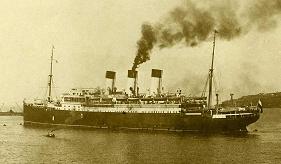
The unavoidable encounter came on September 14, 1914. A fierce battle ensued, and in the end, it was the SMS Trafalgar turned RMS Carmania that would ultimately lose this battle. In all, 51 men were killed and 279 injured from the real SMS Trafalgar, while the real RMS Carmania suffered just 9 losses. The SMS Trafalgar was also lost in the encounter. While the real RMS Carmania suffered repairable damage. The battle and ultimate sinking of the SMS Trafalgar took place off the coast of Brazil. I find it quite ironic that each ship was trying to hide in plain sight, and ended up in a battle with the very ship it was disguised to look like.
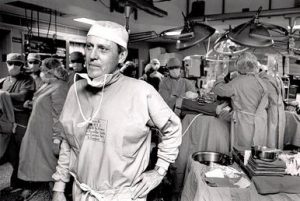 These days, organ transplants are a fairly common event. It’s not that everyone is having them, but that many people who need one get it. Years ago, something like a failing liver was an instant death sentence. The doctors would try to find a way to heal the liver, but they knew that it was not likely to happen. I know that it was heartbreaking for the doctors, who became doctors to save lives, not to lose them.
These days, organ transplants are a fairly common event. It’s not that everyone is having them, but that many people who need one get it. Years ago, something like a failing liver was an instant death sentence. The doctors would try to find a way to heal the liver, but they knew that it was not likely to happen. I know that it was heartbreaking for the doctors, who became doctors to save lives, not to lose them.
The real game changer came in 1963, when Dr Thomas E Starzl of Denver, Colorado, performed the first successful liver transplant in history. The patient was a 48 year old man. Unfortunately, he only lived for 22 day, but in those 22 days, a door was opened. Yes, there were problems, and the patient died, but he also lived…with a liver that wasn’t originally his. That was a huge step in the transplant game, and because of that step, Starzl became known as “the father of modern transplantation.”
Between March 1 and October 4, 1963, Starzl attempted 5 human liver replacements. The first patient bled to death during the operation. The other 4 died after 6.5 to 23 days. The autopsies didn’t show rejection, but rather that the patients died of site infections. During this time, there were also single attempts at transplant, 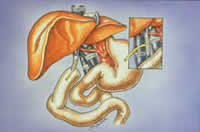 Francis D. Moore in September 1963 in Boston, and Demirleau in January 1964 in Paris. None were considered successful, but as I said. I would disagree, because while the patients died, they also lived. At this point, liver transplants on humans stopped until the summer of 1967. The operation was thought to be too difficult to ever be tried again, but Starzl refused to give up, and in 1967, he performed the first successful human liver transplant, at the University of Colorado Health Sciences Center. This one would be even be considered a success by Starzl. He had also performed the world’s first spleen transplant four months earlier in the same year. After that, transplants became everyday operations.
Francis D. Moore in September 1963 in Boston, and Demirleau in January 1964 in Paris. None were considered successful, but as I said. I would disagree, because while the patients died, they also lived. At this point, liver transplants on humans stopped until the summer of 1967. The operation was thought to be too difficult to ever be tried again, but Starzl refused to give up, and in 1967, he performed the first successful human liver transplant, at the University of Colorado Health Sciences Center. This one would be even be considered a success by Starzl. He had also performed the world’s first spleen transplant four months earlier in the same year. After that, transplants became everyday operations.
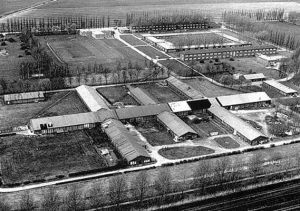 The Neuengamme concentration camp was established in December 1938, and used by the Nazis as a forced labor camp from December 13, 1938 to May 4, 1945, when it was liberated by British troops. At the time of its liberation, about half of the approximately 106,000 Jews held there over time had died. Neuengamme was located on the Elbe river, near Hamburg, Germany. One hundred inmates who were transferred from Sachsenhausen concentration camp, were forced to build the Neuengamme concentration camp. It was established around an empty brickworks in Hamburg-Neuengamme. The bricks produced there were to be used for the “Fuehrer buildings” part of the National Socialists’ redevelopment plans for the river Elbe in Hamburg.
The Neuengamme concentration camp was established in December 1938, and used by the Nazis as a forced labor camp from December 13, 1938 to May 4, 1945, when it was liberated by British troops. At the time of its liberation, about half of the approximately 106,000 Jews held there over time had died. Neuengamme was located on the Elbe river, near Hamburg, Germany. One hundred inmates who were transferred from Sachsenhausen concentration camp, were forced to build the Neuengamme concentration camp. It was established around an empty brickworks in Hamburg-Neuengamme. The bricks produced there were to be used for the “Fuehrer buildings” part of the National Socialists’ redevelopment plans for the river Elbe in Hamburg.
The prisoners worked on the construction of the camp and brickmaking. The bricks were used for regulating the flow of the Dove-Elbe river and the building of a branch canal. The prisoners were also 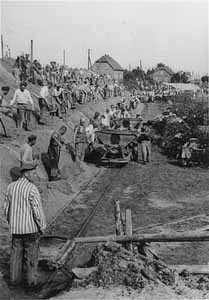 used to mine the clay used to make the bricks. That reminds me of the Jews in Egypt who were forced to build the pyramids. In 1940, the population of the camp was 2,000 prisoners, with a proportion of 80% German inmates among them. Between 1940 and 1945, more than 95,000 prisoners were incarcerated in Neuengamme. On April 10th, 1945, the number of prisoners in the camp itself was 13,500. Over the years that Neuengamme was open, it is estimated that 103,000 to 106,000 people were held there. We may never really know, because they didn’t keep clear records of all the people who went through the camps.
used to mine the clay used to make the bricks. That reminds me of the Jews in Egypt who were forced to build the pyramids. In 1940, the population of the camp was 2,000 prisoners, with a proportion of 80% German inmates among them. Between 1940 and 1945, more than 95,000 prisoners were incarcerated in Neuengamme. On April 10th, 1945, the number of prisoners in the camp itself was 13,500. Over the years that Neuengamme was open, it is estimated that 103,000 to 106,000 people were held there. We may never really know, because they didn’t keep clear records of all the people who went through the camps.
From 1942 on, the inmates were forced to work in the Nazi armament production. At first, the work was performed in the Neuengamme workshops, but soon it was decided to transfer the prisoners to the armaments factories in the surroundings areas. At the end of the war, the prisoners of Neuengamme were spread all over northern Germany. As the Allied troops advanced, hundreds of inmates were forced to dig antitank ditches. In many large north German cities, The prisoners were also require to clear rubble and removed corpses after bombing raids. There were 96 sub-camps, 20 of them for women. In early spring 1945, more than 45,000 inmates were working for the Nazi industry. A third of the women were forced to be among a part of the Nazi 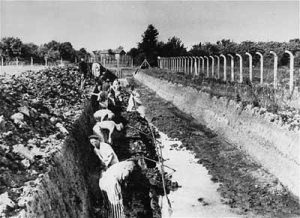 industry workforce. By this time, the internal population of Neuengamme was 13,500, which made it completely overcrowded. The estimated number of victims in Neuengamme is approximately 56,000. Thousands of inmates were hanged, shot, gassed, killed by lethal injection or transferred to the death camps Auschwitz and Majdanek. As the war neared its end, the SS decided to evacuate Neuengamme. They had hoped to avoid having them liberated…probably hoping to regroup further north. This was the start of one of the worst death marches of the war. During these death marches, approximately 10,000 inmates perished by shootings or simply starvation. Nevertheless, the Allies won this war, and then they went in and liberated the prisoners of the many death camp.
industry workforce. By this time, the internal population of Neuengamme was 13,500, which made it completely overcrowded. The estimated number of victims in Neuengamme is approximately 56,000. Thousands of inmates were hanged, shot, gassed, killed by lethal injection or transferred to the death camps Auschwitz and Majdanek. As the war neared its end, the SS decided to evacuate Neuengamme. They had hoped to avoid having them liberated…probably hoping to regroup further north. This was the start of one of the worst death marches of the war. During these death marches, approximately 10,000 inmates perished by shootings or simply starvation. Nevertheless, the Allies won this war, and then they went in and liberated the prisoners of the many death camp.
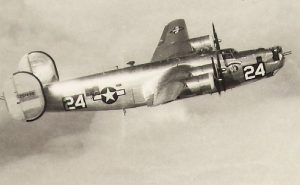 It was during the Battle of the Bulge in World War II, that a B-24J plane that had been dubbed the Tulsamerican went down in the waters off of Croatia on December 17, 1944. Piloted by Army Air Forces 1st Lieutenant Eugene P. Ford, the Tulsamerican carried a crew of nine servicemen. The Tulsamerican was the lead aircraft in a group of six B-24s from the squadron to participate in a combat bombing mission targeting oil refineries at Odertal, Germany. Ford was a member of the 765th Bombardment Squadron, 461st Bombardment Group, 15th Air Force.
It was during the Battle of the Bulge in World War II, that a B-24J plane that had been dubbed the Tulsamerican went down in the waters off of Croatia on December 17, 1944. Piloted by Army Air Forces 1st Lieutenant Eugene P. Ford, the Tulsamerican carried a crew of nine servicemen. The Tulsamerican was the lead aircraft in a group of six B-24s from the squadron to participate in a combat bombing mission targeting oil refineries at Odertal, Germany. Ford was a member of the 765th Bombardment Squadron, 461st Bombardment Group, 15th Air Force.
During a bombing run on December 17, 1944, the Tulsamerican was badly damaged. Ford and his crew, aboard the Tulsamerican were assigned to be the lead aircraft in a group of six B-24s from the squadron participating in a combat bombing mission targeting oil refineries at Odertal, Germany. As they came out of a cloud bank near the target, the squadron was attacked by more than 40 German Me-109 and FW-190 fighters. The unit suffered heavy losses. Three of their six aircraft were shot down and the other three damaged.
The Tulsamerican suffered heavy damage, and they knew they would not make it back to base. The only option  for a possible forced landing was the Isle of Vis in the Adriatic Sea in what is now Croatia. Landing a B-24J on the Isle of Vis was next to impossible, but Ford knew he had to try. Unfortunately, they couldn’t quite make it to the Isle of Vis, and ended up crashing into the Adriatic Sea. Seven of Ford’s crewmembers survived and were rescued, but three, including Ford, were killed in the crash, and their bodies were unable to be recovered.
for a possible forced landing was the Isle of Vis in the Adriatic Sea in what is now Croatia. Landing a B-24J on the Isle of Vis was next to impossible, but Ford knew he had to try. Unfortunately, they couldn’t quite make it to the Isle of Vis, and ended up crashing into the Adriatic Sea. Seven of Ford’s crewmembers survived and were rescued, but three, including Ford, were killed in the crash, and their bodies were unable to be recovered.
As most of us know, military men and women do not like to leave a man behind. Nevertheless, at the time, they were unable to recover the three missing men, and they were officially listed as MIA. Ford left behind an infant daughter and his 21-year-old widow, Marian McMillen Ford, who was pregnant with their son, Richard Stanton Ford. For years it seemed that Ford would never be recovered and laid to rest, but in July of 2017, his remains and his gold wedding band were recovered during a 19 day international scientific mission. Through DNA testing at the Defense POW/MIA Accounting Agency’s forensic anthropology lab in Hawaii, Ford’s remains were finally identified, and his family had closure.
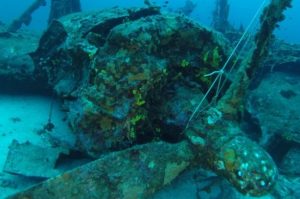
It was decided that ford would be buried in Arlington Cemetery. Ford’s only surviving child, 74 year-old Norma Ford Beard, traveled from her home near Indianapolis to attend the ceremony. She said her brother, Richard, who retired from the Navy after 20 years with two tours of duty in Vietnam, developed a keen interest in his father’s fate before he died in 2008. “He asked me if they ever found our father that I would see that he be buried at Arlington. I promised him that,” Beard said. Now Ford is buried next to the son he never got to meet. A very fitting place, if you ask me. Two honorable men laid to rest side by side…finally.
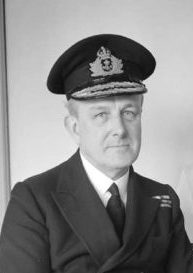 There was, during the Second World War, a somewhat strange and almost morbid plan that was concocted to dupe the Germans into believing that the Allies were going to invade Greece in 1943, when in fact, they were going to invade Sicily, some 500 miles away. The success of the mission really depended on the element of surprise, and in the end, the Allies needed something that would be believable to the Germans.
There was, during the Second World War, a somewhat strange and almost morbid plan that was concocted to dupe the Germans into believing that the Allies were going to invade Greece in 1943, when in fact, they were going to invade Sicily, some 500 miles away. The success of the mission really depended on the element of surprise, and in the end, the Allies needed something that would be believable to the Germans.
The thing that made the operation morbid was that in the end, they would use a dead body to bring about their deception. In their plan a body was dumped in the sea, to be discovered by Axis forces, carrying fake secret documents suggesting the invasion would be staged in Greece. They were a bit shocked when their plan worked, but work it did. The German troops were diverted to Greece, and Operation Mincemeat became a huge success, but even after it was over, it remained a source of secrecy, confusion, and conspiracy theory. The biggest source of confusion being…just who was this man who was found floating in the ocean, and how did he really die? For most people, the operation remains a mystery to this day, but one man believes that he now knows the true identity of the man found floating in the ocean.
In the 1956 film called “The Man Who Never Was,” one historian claims to have finally established beyond any reasonable doubt the identity of the person who played the part of the dead man, He believes he was a homeless Welshman named Glyndwr Michael. The body, which was given the identity of a fake Royal Marine, Major William Martin, was dropped into the sea off Spain in 1943. Winston Churchill had remarked that “Anyone but a bloody fool would know it was Sicily”, but after the tides carried Major Martin’s body into the clutches of Nazi agents, Hitler and his High Command became convinced Greece was the target. “You can forget about Sicily. We know it’s in Greece,” proclaimed General Alfred Jodl, head of the German supreme command operations staff.
“Mincemeat swallowed, rod, line and sinker” was the message sent to Churchill after the Allies learned the plot had worked. In recent years, there have been repeated claims that Mincemeat’s chief planner, Lieutenant Commander Ewen Montagu, was so intent on deceiving the Germans that he stole the body of a crew member from HMS Dasher, a Royal Navy aircraft carrier which exploded off the Scottish coast in March 1943, and lied to the dead man’s relatives. In 2003, a documentary based on 14 years of research by former police officer Colin 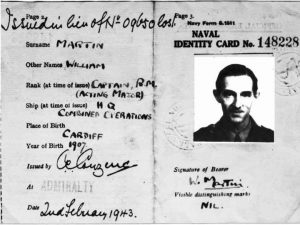 Gibbon claimed that ‘Major Martin’ was Dasher sailor Tom Martin. Then in 2004, official sanction appeared to be given to another candidate, Tom Martin’s crewmate John Melville. At a memorial service on board the current HMS Dasher, a Royal Navy patrol vessel, off the coast of Cyprus, Lieutenant Commander Mark Hill named Mr Melville as Major Martin, describing him as “a man who most certainly was”. Mr Melville’s daughter, Isobel Mackay, later told The Scotsman newspaper: “I feel very honored if my father saved 30,000 Allied lives.” I don’t suppose that we will ever know who the man really was, without exhuming his body, and that hardly seems right. Whoever he was, his family can rest assured that he saved many lives that day.
Gibbon claimed that ‘Major Martin’ was Dasher sailor Tom Martin. Then in 2004, official sanction appeared to be given to another candidate, Tom Martin’s crewmate John Melville. At a memorial service on board the current HMS Dasher, a Royal Navy patrol vessel, off the coast of Cyprus, Lieutenant Commander Mark Hill named Mr Melville as Major Martin, describing him as “a man who most certainly was”. Mr Melville’s daughter, Isobel Mackay, later told The Scotsman newspaper: “I feel very honored if my father saved 30,000 Allied lives.” I don’t suppose that we will ever know who the man really was, without exhuming his body, and that hardly seems right. Whoever he was, his family can rest assured that he saved many lives that day.
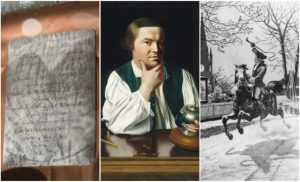 So often the past is lost because it was not preserved somehow, whether by writings, word of mouth, or in rare times it is preserved because someone put things in a time capsule to be opened at a later date. Most of us think of time capsules as a fairly modern concept, but they really aren’t. A few years ago, Massachusetts Governor Deval Patrick and other dignitaries were on hand to witness the opening of one of the nation’s oldest time capsules, located in the Art of the Americas wing at the Boston Museum of Fine Arts. The date was January 6, 2015. The museum’s conservator, Pam Hatchfield removed the screws from the corners of the brass box and carefully extracted its contents using tools including a porcupine quill and a dental pick that belonged to her grandfather.
So often the past is lost because it was not preserved somehow, whether by writings, word of mouth, or in rare times it is preserved because someone put things in a time capsule to be opened at a later date. Most of us think of time capsules as a fairly modern concept, but they really aren’t. A few years ago, Massachusetts Governor Deval Patrick and other dignitaries were on hand to witness the opening of one of the nation’s oldest time capsules, located in the Art of the Americas wing at the Boston Museum of Fine Arts. The date was January 6, 2015. The museum’s conservator, Pam Hatchfield removed the screws from the corners of the brass box and carefully extracted its contents using tools including a porcupine quill and a dental pick that belonged to her grandfather.
In December, Hatchfield had spent nearly seven hours extracting the time capsule from the cornerstone of the Massachusetts State House. The event brought with it an electrical feeling of excitement. The brass box, now green with age, measured 5.5 by 7.5 by 1.5 inches, which is a little smaller than a cigar box. It weighed 10 pounds. The contents of the time capsule were not a complete surprise, because the original time capsule had been removed in 1855, during some repairs to the building. At that time, its contents were cleaned and documented before it was placed back in the cornerstone.
More recently, workers fixing a leak unearthed the time capsule that had been placed in the building’s cornerstone more than two centuries earlier. But even after X-raying and examining the box, Hatchfield and her colleagues had no way of knowing what kind of condition the ancient contents would be in, nor did they have any idea of what was inside. The first items removed from the time capsule were folded newspapers. They 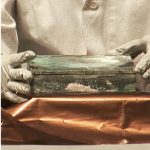
 were in “amazingly good condition” according to Hatchfield. There were five newspapers all, including copies of the Boston Bee and Boston Traveler. Next they removed 23 coins, in denominations of half-cent (something modern people haven’t heard of), penny, quarter, dime and half-dime (Isn’t that a nickel? I guess it hadn’t been named yet). Some of the coins dated back to the mid-19th century, but some were from 1795. There was also a so-called “Pine Tree Shilling” dated to 1652. Just the coins alone are an amazing find, but they wouldn’t be proof of who had placed them in the box. The box also contained a copper medal with George Washington’s image and the words “General of the American Army,” a seal of the Commonwealth of Massachusetts, and a title page from the Massachusetts Colony Records. There was no clear indication of who it had belonged to. Finally, Hatchfield removed a silver plate with fingerprints still on it, bearing an inscription dedicating the State House cornerstone on the 20th anniversary of American independence in July 1795. While the silver plate is amazing, to me, the fingerprints are a stellar find.
were in “amazingly good condition” according to Hatchfield. There were five newspapers all, including copies of the Boston Bee and Boston Traveler. Next they removed 23 coins, in denominations of half-cent (something modern people haven’t heard of), penny, quarter, dime and half-dime (Isn’t that a nickel? I guess it hadn’t been named yet). Some of the coins dated back to the mid-19th century, but some were from 1795. There was also a so-called “Pine Tree Shilling” dated to 1652. Just the coins alone are an amazing find, but they wouldn’t be proof of who had placed them in the box. The box also contained a copper medal with George Washington’s image and the words “General of the American Army,” a seal of the Commonwealth of Massachusetts, and a title page from the Massachusetts Colony Records. There was no clear indication of who it had belonged to. Finally, Hatchfield removed a silver plate with fingerprints still on it, bearing an inscription dedicating the State House cornerstone on the 20th anniversary of American independence in July 1795. While the silver plate is amazing, to me, the fingerprints are a stellar find.
“This cornerstone of a building intended for the use of the legislative and executive branches of the government of the Commonwealth of Massachusetts was laid by his Excellency Samuel Adams, Esquire, governor of the said Commonwealth,” Michael Comeau, executive director of the Massachusetts Archives, read from the plate’s inscription to the assembled crowd, adding “How cool is that.” It is believed that the plate was the work of Paul Revere, the master metalsmith and engraver turned Revolutionary hero who placed the time capsule alongside Adams and William Scollay, a colonel in the Revolutionary War. It took nearly an hour to remove all the items from the time capsule. I’m sure they wanted to be both careful, and also have a really good look at them. The 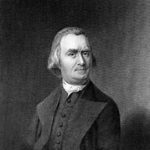
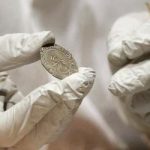
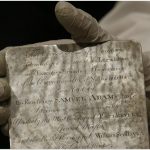 museum’s conservators then began the work on preserving the contents so they could be put on display. According to the Massachusetts Secretary of State, William Galvin, the time capsule will eventually be returned to the cornerstone, but it’s not certain whether state officials will add any new objects to it before burying it again.
museum’s conservators then began the work on preserving the contents so they could be put on display. According to the Massachusetts Secretary of State, William Galvin, the time capsule will eventually be returned to the cornerstone, but it’s not certain whether state officials will add any new objects to it before burying it again.

 A while back, my sister, Cheryl Masterson and I were talking about our Dad, Allen Spencer’s military training. Like much of Dad’s military service, big discussions about his training days were non-existent. So, I decided to trace his military career, to the best ability I could, and basically take a walk in his footsteps. We knew that he shipped out of Fort Snelling, Minnesota, and then spent time in Salt Lake City, Utah and in Kearney, Nebraska. We weren’t sure exactly where his basic training took place or his training for the B-17. That conversation got my curiosity going, and I decided that I needed to check it out. It’s not always easy to research a persons path through every aspect of their lives, but with the knowledge that he initially started out at Fort Snelling, I hoped to trace the rest of his journey through World War II. Fort Snelling, it turns out was a Reception Center. The men and women started there, received their vaccinations, medical exams, and their gear. They were classified and assigned to a unit. Then they were shipped out for their basic training.
A while back, my sister, Cheryl Masterson and I were talking about our Dad, Allen Spencer’s military training. Like much of Dad’s military service, big discussions about his training days were non-existent. So, I decided to trace his military career, to the best ability I could, and basically take a walk in his footsteps. We knew that he shipped out of Fort Snelling, Minnesota, and then spent time in Salt Lake City, Utah and in Kearney, Nebraska. We weren’t sure exactly where his basic training took place or his training for the B-17. That conversation got my curiosity going, and I decided that I needed to check it out. It’s not always easy to research a persons path through every aspect of their lives, but with the knowledge that he initially started out at Fort Snelling, I hoped to trace the rest of his journey through World War II. Fort Snelling, it turns out was a Reception Center. The men and women started there, received their vaccinations, medical exams, and their gear. They were classified and assigned to a unit. Then they were shipped out for their basic training.
Most of the men in dad’s original unit would go on to become part of the transport or supply teams, but because my dad had a job building airplanes for Douglas Aircraft Company prior to enlisting in the Army Air Force, he was moved to a unit that would spend the war in a B-17G flying Fortress Bomber. For my dad, it was an epic job. He often wrote home to his family about just how amazing the B-17 Bomber was, and how proud 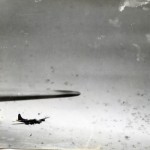
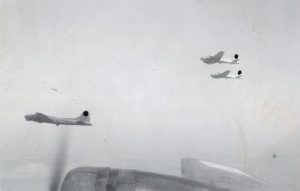 he was to be serving on one. Part of dad’s job was to be the flight engineer, another position that stemmed from his vast knowledge of airplanes. The flight engineer knew the all equipment on the B-17 better than the pilot and any other crew member from the engines to the radio equipment to the armament to the engines to the electrical system and to anything else. Many flight engineers served as maintenance crew chiefs before moving to the position of a B-17 flight engineer. The flight engineer was also the top turret gunner. Dad’s training for his work took him to Miami Beach, Florida, then to Gulfport, Mississippi, and Dyersburg, Tennessee.
he was to be serving on one. Part of dad’s job was to be the flight engineer, another position that stemmed from his vast knowledge of airplanes. The flight engineer knew the all equipment on the B-17 better than the pilot and any other crew member from the engines to the radio equipment to the armament to the engines to the electrical system and to anything else. Many flight engineers served as maintenance crew chiefs before moving to the position of a B-17 flight engineer. The flight engineer was also the top turret gunner. Dad’s training for his work took him to Miami Beach, Florida, then to Gulfport, Mississippi, and Dyersburg, Tennessee.
In Gulfport, Mississippi, dad was trained as a flight airplane mechanic, and it was here that he volunteered to become an aerial gunner as well. He received his wings in November 1943, following gunnery training in Las Vegas, Nevada. Dyersburg Army Air Force Base was the largest combat aircrew training school built during the early war years. It was the only inland B-17 Flying Fortress training base east of the Mississippi River. The base was located on 2,541 acres, not including the practice range. Approximately 7,700 crew men received their last phase training at DAAB. From Dyersburg AAB, dad was sent to Kearney, Nebraska. There he and his crew were assigned a brand new B-17G bomber. Shortly thereafter they flew to New York to be dispatched to their base in the European Theater…Great Ashfield, Suffolk, England. Before arriving there, he wasn’t even sure where he was going, because these things were kept top secret, and were revealed on a need-to-know basis. Based out of Great Ashfield, dad flew 36 missions, one more that the required 35, having volunteered to fill in for a sick 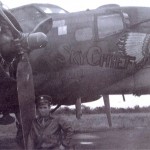
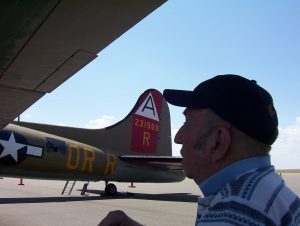 crewmember on the final flight. In one of his letters, he told his family not to worry about him, because as he said, “I’m not afraid of what the near future might bring. I’m going into combat fully confident of my plane, crew, and myself. And I know that with the help of God, I’ll come home again in just as good a condition as I am right now.” And so he did. Today would have been my dad’s 95th birthday. Happy birthday in Heaven Dad. We love and miss you very much and we are so proud of you.
crewmember on the final flight. In one of his letters, he told his family not to worry about him, because as he said, “I’m not afraid of what the near future might bring. I’m going into combat fully confident of my plane, crew, and myself. And I know that with the help of God, I’ll come home again in just as good a condition as I am right now.” And so he did. Today would have been my dad’s 95th birthday. Happy birthday in Heaven Dad. We love and miss you very much and we are so proud of you.
 These days, it’s called scooping the story. A scoop is an item of news reported by one journalist or news organization before others have a chance to report the same story, and in modern times, it is vital to be the first one to report a story if possible, because in 5 minutes, it’s old news. While scooping is a big deal in today’s world, we wouldn’t think that in times past it would as big a deal as it is today, because of the instant source of information the internet provides. Nevertheless, we would be very wrong.
These days, it’s called scooping the story. A scoop is an item of news reported by one journalist or news organization before others have a chance to report the same story, and in modern times, it is vital to be the first one to report a story if possible, because in 5 minutes, it’s old news. While scooping is a big deal in today’s world, we wouldn’t think that in times past it would as big a deal as it is today, because of the instant source of information the internet provides. Nevertheless, we would be very wrong.
William Byers was a surveyor working in Oregon and Washington. He also served as a territorial When he heard about the discovery of gold and silver near Pike’s Peak area of Colorado, he decided fulfill a dream he had, and be the publisher of a newspaper. Byers arrived in Denver in March of 1959. Denver was quickly becoming a center for the mining industry in Colorado. Byers decided that it was the perfect location to begin publishing his newspaper, but Byers wasn’t the only journalist with this idea. As was the case in many western frontier towns, would-be journalists in Denver were vying for the honor of publishing the first newspaper.
Byers’ named his paper The Rocky Mountain News, because of the rugged mountains in the area. His biggest competitor was the Cherry Creek Pioneer, and both of them were rushing to get their newspaper into print. Byers set to work on the first edition of his newspaper shortly after he arrived in Denver in March. Working with a hand press in the attic of a local saloon…not the usual type of production office for newspapers, but it was what he had, so there in that dusty attic, byers got to work.
It was a race to the finish between the two competitors, and it was really anybody’s guess as to who would win. Each kept their production room private, so the other would not know the current status. Then, on April 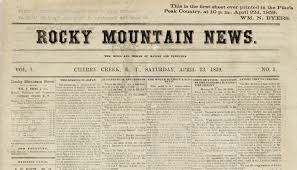 23, 1859, beating the first release of The Pioneer by only 20 minutes, Byers became the first man to publish a news paper in Denver. It was the perfect scoop, but the term scoop, which is of American origin, and wasn’t documented until 1874. A verb, meaning to beat someone in reporting first, it is first used in 1884. By the time the other paper came out, 20 minutes later, any news that was new was now old news. Byers had successfully beat the competition. He died in 1903, having witnessed and shaped Denver’s transformation from a rugged frontier-mining town to a sophisticated business and financial center of the Rocky Mountain West.
23, 1859, beating the first release of The Pioneer by only 20 minutes, Byers became the first man to publish a news paper in Denver. It was the perfect scoop, but the term scoop, which is of American origin, and wasn’t documented until 1874. A verb, meaning to beat someone in reporting first, it is first used in 1884. By the time the other paper came out, 20 minutes later, any news that was new was now old news. Byers had successfully beat the competition. He died in 1903, having witnessed and shaped Denver’s transformation from a rugged frontier-mining town to a sophisticated business and financial center of the Rocky Mountain West.

 There are two major ways that God has “gifted” His children. Yes, God gives us great and wonderful gifts all the time, but the greatest gift He could give us was His Son Jesus Christ. Jesus came to earth as a baby, and went through all the same things in life that we did, but did it all without sinning. Most of us can’t imagine going through 10 minutes without having a wrong thought, action, or attitude. We can be sharp tongued, selfish, and grouchy. Jesus could do none of those things. Everything he did had to be truthful, kind, and selfless. He had to be all the things we could not be, and then he had to be willing to make the ultimate sacrifice, because the people of Earth were in trouble…and without Jesus, there was no way out of it.
There are two major ways that God has “gifted” His children. Yes, God gives us great and wonderful gifts all the time, but the greatest gift He could give us was His Son Jesus Christ. Jesus came to earth as a baby, and went through all the same things in life that we did, but did it all without sinning. Most of us can’t imagine going through 10 minutes without having a wrong thought, action, or attitude. We can be sharp tongued, selfish, and grouchy. Jesus could do none of those things. Everything he did had to be truthful, kind, and selfless. He had to be all the things we could not be, and then he had to be willing to make the ultimate sacrifice, because the people of Earth were in trouble…and without Jesus, there was no way out of it.
God knew that we were lost and that there was no Earthly way out of the situation, so because He loved the world so much, He sent His Son, Jesus and Jesus willingly came to Earth, knowing what would happen to him when he was a grown man. He could have stopped it. He could have told his Father that he didn’t want to go, but he didn’t. He accepted the unspeakable job that his Father, our God set before him, and he went through  with it. I’m sure he thought about how horrible this would be, and I’m sure that a part of him wanted to make the whole progression stop, but he knew that if he didn’t do it, the world would have to pay the price of spiritual death for eternity.
with it. I’m sure he thought about how horrible this would be, and I’m sure that a part of him wanted to make the whole progression stop, but he knew that if he didn’t do it, the world would have to pay the price of spiritual death for eternity.
What an amazingly selfless act of love!! Jesus paid it all…past, present, and future. We are free!! We are redeemed!! The horrible crucifixion was a successful payment for our sins. I am redeemed…we are all redeemed, and all we have to do is accept Jesus as our Lord and Saviour. It’s as simple as that. Thank you Jesus!! Happy Resurrection Day!!
 Twenty years ago today, two teenaged gunmen walked into Columbine High School and opened fire, killing 13 people. Yesterday, I watched a news broadcast about the aftermath of those killings. One of the parents, commented on the fact that since Columbine, every time a school shooting occurs, it is compared to Columbine…often stated, “It was a Columbine-like shooting.” Those words had become synonymous with Columbine High School. Like a dark cloud, the stigma of that shooting comes back every time there is another shooting. Twenty years later, the parents and families of the 13 victims of Columbine want to change that…to remove the dark cloud, because if we continue to call shootings Columbine-like…it’s like they win. The grief and pain continue. They do not want their loved ones to always be associated with sadness and defeat. I think that is an amazing idea.
Twenty years ago today, two teenaged gunmen walked into Columbine High School and opened fire, killing 13 people. Yesterday, I watched a news broadcast about the aftermath of those killings. One of the parents, commented on the fact that since Columbine, every time a school shooting occurs, it is compared to Columbine…often stated, “It was a Columbine-like shooting.” Those words had become synonymous with Columbine High School. Like a dark cloud, the stigma of that shooting comes back every time there is another shooting. Twenty years later, the parents and families of the 13 victims of Columbine want to change that…to remove the dark cloud, because if we continue to call shootings Columbine-like…it’s like they win. The grief and pain continue. They do not want their loved ones to always be associated with sadness and defeat. I think that is an amazing idea.
One of the victims, Lauren Townsend loved animals. She volunteered at the local animal shelter, so her parents 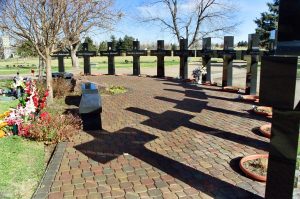 decided to remember her by setting up the Lauren Townsend Memorial Wildlife Fund. Cassie Bernall’s family started the Cassie Bernall Foundation. Their latest project is The Books for Classrooms program. Steven Curnow was a member of the Cornish American Heritage Society from an early age, and in fact he was their youngest member, so his family set up the Steven Curnow Memorial Foundation in support of the Cornish American Heritage Society. Several of the victims had planned to join the military after high school. They were made honorary veterans. Coach William “Dave” Sanders is credited with saving untold numbers of students as he ran into the cafeteria and told them to flee the building. Then he left to warn other students, sacrificing his own life for others. The softball field at Columbine has been named after him, and a scholarship program was set up in his honor. Each of the people who died that day was filled with promise. They were Rachel Scott, Daniel Rohrbough, Coach Dave Sanders, Kyle
decided to remember her by setting up the Lauren Townsend Memorial Wildlife Fund. Cassie Bernall’s family started the Cassie Bernall Foundation. Their latest project is The Books for Classrooms program. Steven Curnow was a member of the Cornish American Heritage Society from an early age, and in fact he was their youngest member, so his family set up the Steven Curnow Memorial Foundation in support of the Cornish American Heritage Society. Several of the victims had planned to join the military after high school. They were made honorary veterans. Coach William “Dave” Sanders is credited with saving untold numbers of students as he ran into the cafeteria and told them to flee the building. Then he left to warn other students, sacrificing his own life for others. The softball field at Columbine has been named after him, and a scholarship program was set up in his honor. Each of the people who died that day was filled with promise. They were Rachel Scott, Daniel Rohrbough, Coach Dave Sanders, Kyle  Velasquez, Steven Curnow, Cassie Bernall, Isaiah Shoels, Matthew Kechter, Lauren Townsend, John Tomlin, Kelly Fleming, Daniel Mauser, and Corey DePooter. Their families would like them to be remembered for their accomplishments and their dreams, rather than as victims. They would like the school to be remembered as a place of renewal, healing, and mostly of peace. They noted that Columbine means little doves… among other things. I rather prefer the Victorian meaning, which is resolved to win. I think that if the names of the killers are forever forgotten and never mentioned again; and if these lost ones are remembered for their winning spirit, their loving ways, and their kindness to others, then the right side wins.
Velasquez, Steven Curnow, Cassie Bernall, Isaiah Shoels, Matthew Kechter, Lauren Townsend, John Tomlin, Kelly Fleming, Daniel Mauser, and Corey DePooter. Their families would like them to be remembered for their accomplishments and their dreams, rather than as victims. They would like the school to be remembered as a place of renewal, healing, and mostly of peace. They noted that Columbine means little doves… among other things. I rather prefer the Victorian meaning, which is resolved to win. I think that if the names of the killers are forever forgotten and never mentioned again; and if these lost ones are remembered for their winning spirit, their loving ways, and their kindness to others, then the right side wins.

